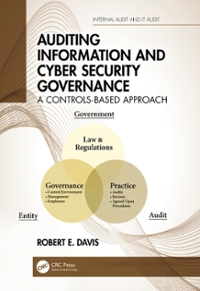Question
Hi guys I have this case study that I really do not understand and it is due soon can someone help me, I'd really appreciate
Hi guys I have this case study that I really do not understand and it is due soon can someone help me, I'd really appreciate it!
Case #1
Vroom Corporation manufactures engines for automobiles. The company produces three models which they have labeled Economy, Luxury, and Superior. The company has been using the same job order cost accounting system for the past 15 years. The system applies manufacturing overhead on the basis of direct labor hours. Product cost and annual sales data are as follows:
:
|
| Economy | luxury | Superior |
| Annual Sales (units) | 1600 | 2500 | 1200 |
| Product Cost |
|
|
| Rate per hour | |
| Direct Material | $25 | $60 | 95 |
|
|
| Direct labor(# of hours) | 1 | 2 | 2 | $25 |
|
| Manufacturing overhead(# of hours) | 1 | 2 | 2 | $175 |
|
Maufacturing overhead budget
Depreciation machinery $4,100,000
Maintainence machinery 350,000
Depreciation, taxes and insurance for factory 690,000
Engineering 790,000
Purchasing, Receiving and shipping 680,000
Inspection and repair of defects 830,000
Material handling 1,005,000
Misellaneous manufacturing overhead cost 695,000
$9,140,000
Direct labor budget:
Economy 25,000 hours
Luxury 2200 hours
Superior 25,000 hours
52200 hours
Predetermined overhead rate=Budget overhead divided by Budgeted Direct Labor hours
$175 direct labor hour
For the past 5 years, the companys pricing formulas has been to set each products target price at 11 5 percent of its full product cost. Recently, however, the luxury model has come under increasing price pressure from offshore competitors. The result was that the price on the luxury model has been lowered to $500.
The companys president is concerned that they are not able to compete with other companies which are selling similar engines for only dollars above Vrooms production cost. You have been hired to assess the product costing system. You have gathered the following information needed to implement an activity based costing system. The percentages are the proportion of each cost driver consumed by each product line.
Product lines
Economy Luxury Superior
| Machinery Depreciation and maintenance | Machine time | 40 % | 8% | 52% | ||||
| Engineering, Inspection, and repair of defects | Engineering hours | 46% | 8% | 46% | ||||
| Purchasing, receiving, shipping, & mat'l handling | Number of material orders | 44% | 16% | 40% | ||||
| Factory depreciation, taxes, ins. For factory and miscellaneous mfg overhead | Factory space usage | 40% | 15% | 45% | ||||
|
|
|
|
|
| ||||
|
|
|
|
|
| ||||
Required
Compute the target prices for the three engine models based on the traditional, volume based product costing system. Round the target price to the nearest cent.
Compute new product costs for the three products using an ABC system based on the new data you collected. Round to the nearest cent.
Calculate a new target price for the three products based on the ABC system.
Compare the new target prices with the target prices under the traditional costing system.
Write a memo to the company president explaining what has been happening as a result of the firms traditional volume based product costing system. Include some strategic options that management has.
***The submission should be an excel file.Part 5 is a memo. You should prepare the memo in Word and then cut and paste special (select Microsoft Work Document Object) into your excel worksheet or insert a text box into your worksheet and type your narrative into the text box.
All calculations are to be shown, including the use of Excel formulas where applicable.
Step by Step Solution
There are 3 Steps involved in it
Step: 1

Get Instant Access to Expert-Tailored Solutions
See step-by-step solutions with expert insights and AI powered tools for academic success
Step: 2

Step: 3

Ace Your Homework with AI
Get the answers you need in no time with our AI-driven, step-by-step assistance
Get Started


